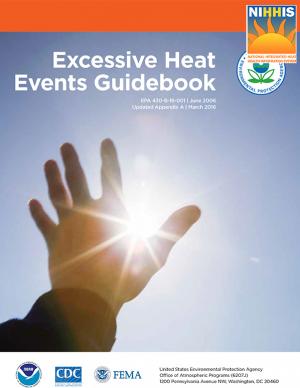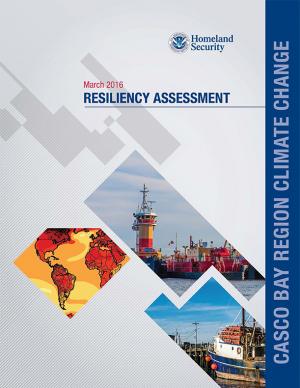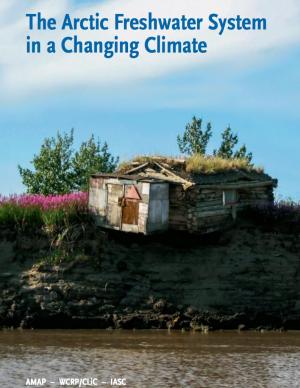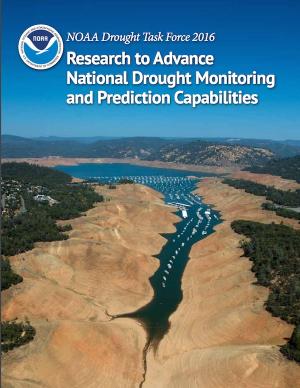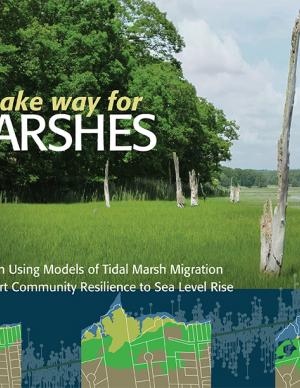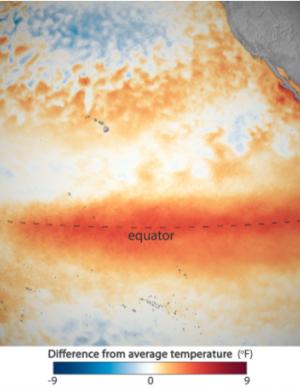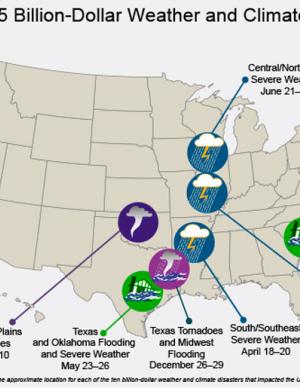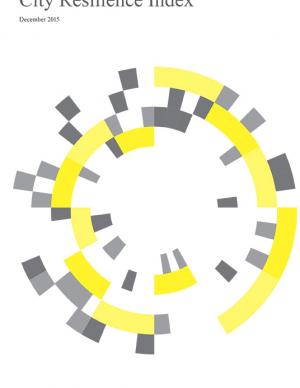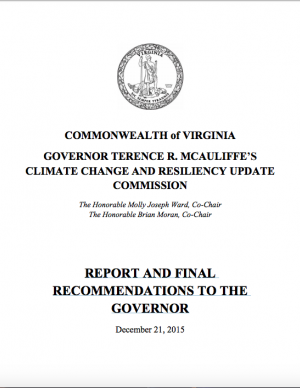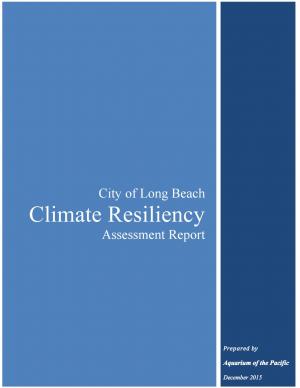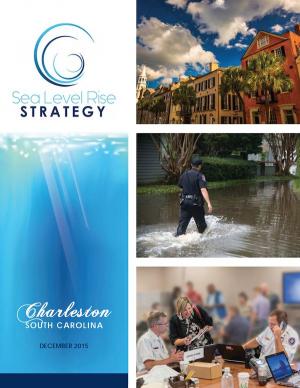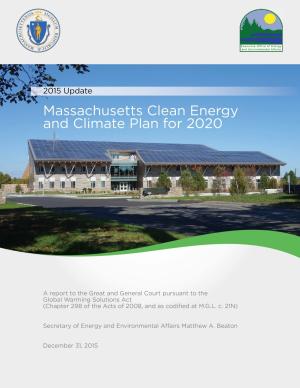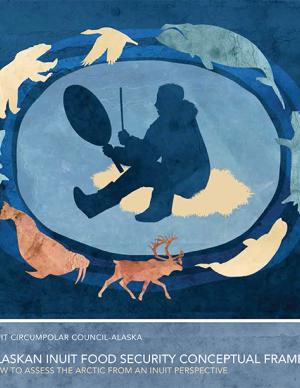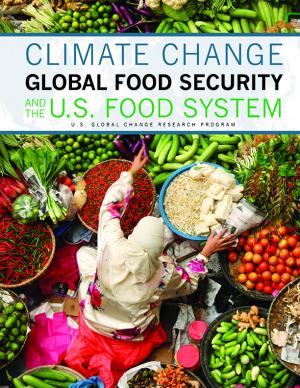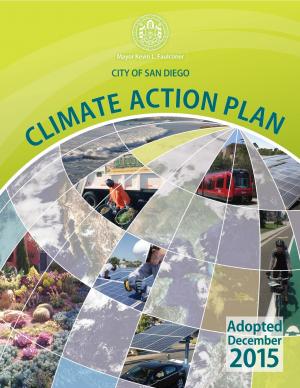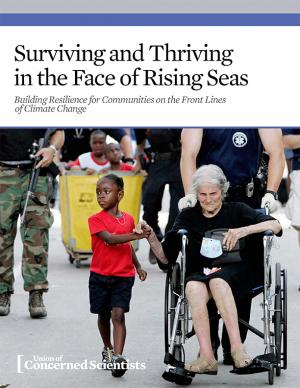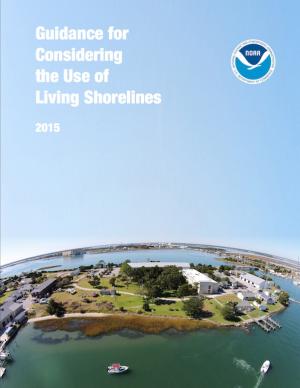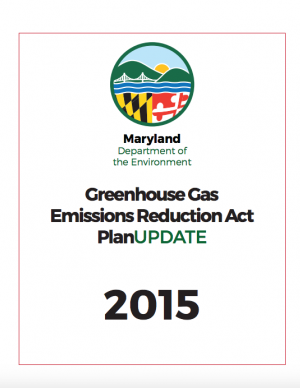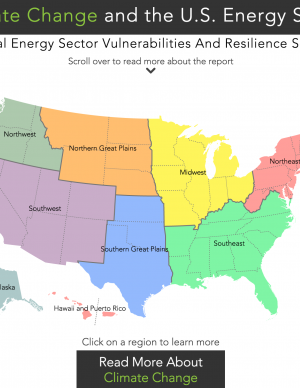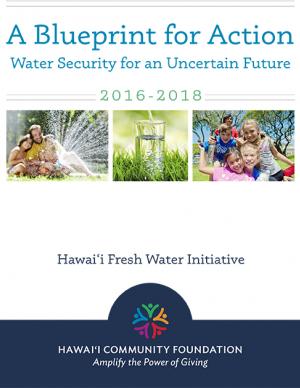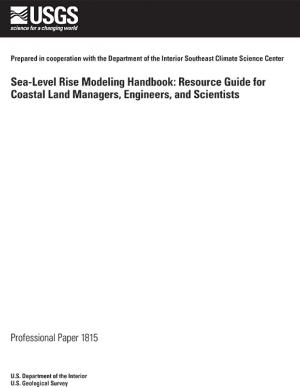President Obama issued this Memorandum and Action Plan on building long-term drought resilience under his Climate Action Plan. The document elucidates the role of the National Drought Resilience Partnership, a team of federal agencies, in helping communities manage the impact of drought by linking information—such as forecasts and early warnings—with drought preparedness strategies in critical sectors like agriculture, municipal water systems, tourism, and transportation.
Access a range of climate-related reports issued by government agencies and scientific organizations. Browse the reports listed below, or filter by scope, content, or focus in the boxes above. To expand your results, click the Clear Filters link.
The U.S. Environmental Protection Agency produced this publication with assistance from federal, state, local, and academic partners. It is designed to help community officials, emergency managers, meteorologists, and others plan for and respond to excessive heat events. The guidebook highlights best practices that have been employed to save lives during excessive heat events in different urban areas. Originally published in June 2006, its Appendix A—a list of federal resources—was updated in March 2016.
This fact sheet presents recent climate change investigations of the U.S. Geological Survey in New England using selected recent publications that highlight the broad spectrum of expertise and commitment to understanding the relations of climate change and water resources in the region.
The State of Maine is experiencing shifts in atmospheric and oceanographic conditions that put it at the precipice of abrupt climate change. This report—part of the Department of Homeland Security's Regional Resiliency Assessment Program (RRAP)—focuses on the local and regional consequences of climate disruptions and their impacts on critical infrastructure in the Casco Bay region, the most developed and populous region in Maine. The report identifies vulnerabilities that may potentially affect the region’s ability to maintain its critical infrastructure systems and recover from the impacts of climate change.
The Arctic is changing at a startling pace. Understanding the role of freshwater in these changes—both how Arctic freshwater systems are affected by climate change, and how changes to the Arctic freshwater system will affect other environmentally relevant processes—is critical to understanding how these changes will affect the lives of people living in the Arctic and beyond. This report is intended to inform the non-expert reader about these changes to the freshwater systems in the Arctic, and their implications.
As climate has warmed over recent years, a new pattern of more frequent and more intense weather events has unfolded across the globe. Climate models simulate such changes in extreme events, and some of the reasons for the changes are well understood. Warming increases the likelihood of extremely hot days and nights, favors increased atmospheric moisture that may result in more frequent heavy rainfall and snowfall, and leads to evaporation that can exacerbate droughts.
Event attribution can answer questions about how much climate change influenced the probability or intensity of a specific type of weather event. As event attribution capabilities improve, they could help inform choices about assessing and managing risk, and in guiding climate adaptation strategies. This report examines the current state of science of extreme weather attribution, and identifies ways to move the science forward to improve attribution capabilities.
The SECURE Water Report identifies climate change as a growing risk to Western water management and cites warmer temperatures, changes to precipitation, snowpack and the timing and quality of streamflow runoff across major river basins as threats to water sustainability. Water supply, quality and operations; hydropower; groundwater resources; flood control; recreation; and fish, wildlife and other ecological resources in the Western states remain at risk.
Drought threatens our country’s natural resources, economy, and overall health. Increasingly, NOAA is charged with providing and improving information that helps stakeholders at all levels manage water resources in a more resilient and climate-smart manner. Working with input from farmers, ranchers, natural resource managers, and other drought-impacted industries and populations, NOAA research has worked to improve drought monitoring and prediction for better planning and mitigation of impacts.
Occupational exposure to heat can result in injuries, disease, reduced productivity, and death. To address this hazard, the National Institute for Occupational Safety and Health evaluated the scientific data on heat stress and hot environments and updated these criteria (last updated in 1986). This revision includes information about physiological changes that result from heat stress; evidence to redefine heat stroke and associated symptoms; and updated information on physiological monitoring and personal protective equipment and clothing that can be used to control heat stress.
Rapidly rising seas threaten to drown tidal marshes and diminish the benefits provided to people and wildlife by these valuable coastal ecosystems. Increasingly, government agencies and non-government organizations are harnessing the power of computer-based models of marsh ecosystems to inform management and policy strategies to sustain tidal marshes. This report covers the entire modeling lifecycle, from developing a modeling approach and working with data to communicating modeling results. While some of the information pertains specifically to the northeastern United States, the report is also intended as a useful resource for modeling of marsh migration in other regions. The report is available online, with a printer-friendly version also available for download.
Climate.gov's El Niño-Southern Oscillation—or ENSO—page provides information on the current status of El Niño and La Niña, plus links to forecasts, maps, and videos from across NOAA that help explain the impacts of the ENSO on the U.S.
The National Centers for Environmental Information (NCEI) is the nation's scorekeeper in terms of addressing severe weather and climate events in their historical perspective. As part of its responsibility of monitoring and assessing the climate, NCEI tracks and evaluates climate events in the U.S. and globally that have great economic and societal impacts. Found on these webpages are information on the weather and climate events that have had the greatest economic impact from 1980 to 2015. The U.S. has sustained 188 weather and climate disasters since 1980 where overall damages/costs reached or exceeded $1 billion (including CPI adjustment to 2015). The total cost of these 188 events exceeds $1 trillion.
On Earth Day 2015, Connecticut Governor Malloy issued Executive Order 46 creating the Governor’s Council on Climate Change, also known as the GC3. The Council is to examine the effectiveness of existing policies and regulations designed to reduce greenhouse gas emissions and identify new strategies to meet the state’s greenhouse gas emissions reduction target of 80 percent below 2001 levels by 2050. It will do so, in part, by developing interim state-wide greenhouse gas reduction targets for years between 2020 and 2050 and by identifying short- and long-term statewide strategies to achieve the necessary reductions.
Urban populations are facing increasing challenges from numerous natural and man-made pressures, such as rapid urbanisation, climate change, terrorism, and increased risks from natural hazards. Cities must learn to adapt and thrive in the face of these diverse challenges—they must learn how to build resilience in an uncertain world. Armed with this knowledge and understanding, governments, donors, investors, policy makers, and the private sector will be able to develop effective strategies to foster more resilient cities. Supported by the Rockefeller Foundation, the City Resilience Index is being developed by Arup. It builds on extensive research undertaken by Arup to establish an accessible, evidence-based definition of urban resilience, which culminated in the publication of the City Resilience Framework (CRF) in April 2014. This provides a holistic articulation of city resilience, structured around four dimensions and 12 goals that are critical for the resilience of our cities. This structure also forms the foundations of the CRI.
This report documents recommendations made by the Virginia Climate Commission and describes how they were acted upon. Highlights include appointment of a Chief Resilience Officer and development of a protocol for sea level rise projections. The report also makes 113 recommendations to help Virginia adapt to the consequences of climate change, and to reduce Virginia’s contributions to the problem.
In January 2015, Long Beach Mayor Robert Garcia asked the Aquarium of the Pacific to take a lead in assessing the primary threats that climate change poses to Long Beach, to identify the most vulnerable neighborhoods and segments of the population, and to identify and provide a preliminary assessment of options to reduce those vulnerabilities. Over the course of 2015, the Aquarium hosted and participated in meetings and workshops with academic and government scientists, business and government leaders, local stakeholders, and Long Beach residents to discuss key issues facing our community as the result of climate change. This report, completed in December 2015, represents the culmination of these efforts. The report offers detailed assessments of the five main threats of climate change to Long Beach: drought, extreme heat, sea level rise and coastal flooding, deteriorating air quality, and public health and social vulnerability. It also provides an overview of what is currently being done to mitigate and adapt to these threats, and other options to consider. Finally, this report presents a series of steps and actions that city leaders and community stakeholders can use as a template for making Long Beach a model of a climate resilient city.
Flooding and sea level rise are challenges the City of Charleston has taken seriously for centuries. However, this City that we love is experiencing the effects more frequently than ever. In the 1970s Charleston experienced an average of 2 days of tidal flooding per year and it is projected that the City could experience 180 days of tidal flooding in 2045. Identifying initiatives that will improve our ability to withstand these effects is timely. This
Sea Level Rise Strategy Plan is that comprehensive inventory of initiatives.
The Global Warming Solutions Act of 2008 required the Massachusetts Secretary of Energy and Environmental Affairs to set a limit on greenhouse gas emissions that would lead to a 10–20 percent reduction in emissions by 2020, and an 80 percent reduction by 2050. This update to Massachusetts' 2010 Climate Action Plan includes recommendations on how to achieve this goal.
This technical report focuses on sharing the collective efforts of the Inuit Circumpolar Council-Alaska, 146 Inuit contributing authors, a 12-member Food Security Advisory Committee, and many other Inuit who provided input and guidance to the process. The report aspires to strengthen the evidence base of (1) what Inuit food security is, (2) what the drivers of food (in)security are, and (3) identify information needed to conduct an assessment through the development of a conceptual framework. The assessment tool is designed to build the baseline of information needed to understand the Arctic environment and allow a pathway for assessments (food security, ecosystem, political, cultural, etc.) to link eco- and socio- components of sciences and indigenous knowledge.
This peer-reviewed scientific assessment identifies climate change effects on global food security. Climate change is likely to diminish continued progress on global food security through production disruptions that lead to local availability limitations and price increases, interrupted transport conduits, and diminished food safety, among other causes. The assessment is a contribution to the U.S. National Climate Assessment, is called for under the President’s Climate Action Plan, and was led by the U.S. Department of Agriculture.
With the goal of creating a cleaner San Diego for future generations, the City of San Diego’s Climate Action Plan calls for eliminating half of all greenhouse gas emissions in the City and aims for all electricity used in the city to be from renewable sources by 2035. The Climate Action Plan is a package of policies that will benefit San Diego’s environment and economy. It will help create new jobs in the renewable energy industry, improve public health and air quality, conserve water, more efficiently use existing resources, increase clean energy production, improve quality of life, and save taxpayer money. The plan identifies steps the City of San Diego can take to achieve the 2035 targets, including creating a renewable energy program, implementing a zero waste plan, and changing policy to have a majority of the City’s fleet be electric vehicles. The Climate Action Plan helps achieve the greenhouse gas reduction targets set forth by the State of California. The City’s first Climate Action Plan was approved in 2005 and a commitment to update the plan was included in the City’s 2008 General Plan update.
King County, Washington's Strategic Climate Action Plan sets forth strategies for reducing greenhouse gas emissions and preparing for climate change impacts.
Coastal communities across the United States are facing worsening risks of flooding during routine high tides and damaging storm surges. With sea level rise accelerating along the East and Gulf Coasts, these problems are projected to intensify in the coming years, and they are likely to have a disproportionate impact on low-income and minority communities. This report is an attempt to guide improvements in policy making around disaster aid and preparedness, to ensure that communities receive the support they need before and in the aftermath of climate-related disasters. It also makes the case for better long-term planning and sufficient resources to anticipate and prioritize the needs of frontline communities who bear the brunt of the climate impacts our nation is experiencing.
This guide offers a collection of 19 practical strategies for building owners to make their properties more resilient against the effects of extreme weather events. It draws on advice from over 50 experts in the field of resilience as well as the Federal Emergency Management Agency (FEMA) and the National Flood Insurance Program (NFIP). In addition, the manual offers guidance on determining a property’s vulnerability to various hazards, finding which strategies are relevant to a particular building, and getting started with a resilience plan.
The 2015 World Economic Forum rated food crises, extreme weather, and failure of infrastructure as top global risks in 2015. Around the world, regions are contending with extreme weather, including drought, flooding, and changes in growing seasons. These extremes affect crops and pests, and may disrupt agriculture and its supply chains, especially in the second half of this century. This paper presents an example of how transportation of agricultural products in the Upper Mississippi River Valley region of the United States may be impacted by, and respond to, a changing climate.
Living shorelines provide an innovative approach to reducing damage and erosion while simultaneously enhancing coastal community resilience by providing additional social, economic, and ecological benefits. NOAA supports alternative approaches to hardened shorelines and seeks innovative ways to increase coastal resilience to erosion and storm threats while conserving habitats for living marine resources. Important components of this report include what to consider when selecting appropriate techniques (e.g., vegetation, edging, sills, vegetated breakwaters) to balance shoreline stabilization and coastal and marine resource conservation, and how to navigate NOAA’s potential regulatory (consultation and permitting) and programmatic roles in living shorelines project planning.
This guide provides a framework for the selection of appropriate storm damage risk reduction treatments for low-volume roads. There are important tasks and processes that are necessary to make informed treatment selections that this guide does not cover in detail, but should be included in comprehensive road management programs. These tasks include road condition inventories, hazard assessments, and strategic plans for treating high-hazard sites. Specific “stormproofing” measures discussed in this guide include timely road maintenance, many key road drainage measures, culvert diversion prevention, pulling back marginal fill slopes, use of biotechnical and vegetative slope stabilization and erosion control, gully prevention, bridge maintenance, and many other measures.
This report updates the information contained within Maryland's 2012 Greenhouse Gas Reduction Act (GGRA) Plan. This document summarizes the state’s progress toward achieving the 2020 emissions reduction goal established by the GGRA and shows that Maryland is on target to not only meet, but to exceed, its emission reduction goal.
This report synthesizes available science on the observed and projected impacts of climate change in the Great Lakes Basin and documents the climate change assessment methods applied in the region. It was initiated in support of commitments under Annex 9-Climate Change Impacts of the Great Lakes Water Quality Agreement to take into account the climate change impacts on the chemical, physical, and biological integrity of the waters of the Great Lakes and communicate and coordinate binationally regarding ongoing developments of domestic science. The report draws upon the range of research conducted by various levels of government, academia, and other organizations and the growing body of knowledge in areas of ecological research and climate change and provides researchers, managers, and decision makers with a time-stamped, thorough, and methodical examination of that climate change science.
An interactive map provides access to one-page documents of climate and energy information customized for nine regions of the United States. Each document summarizes climate impacts for the region; provides a table of Quick Facts on energy supply and demand, electrical power, and critical infrastructure in the region; and enumerates examples of important energy sector vulnerabilities and climate resilience solutions.
Three years after Superstorm Sandy devastated parts of New York City, the housing stock in many urban coastal areas remains vulnerable to flooding. Much of the housing stock in these high-risk areas is out of compliance with federal flood-resistant design and construction standards.The report illustrates the significant design and financial hurdles of retrofitting multifamily housing common to many urban, coastal areas, describes existing policies and design approaches and their shortfalls, and provides recommendations for state and local practitioners to improve resilience of multi-family housing in their communities.
This publication is the annual National Marine Fisheries Service yearbook of fishery statistics for the United States for 2014. The report provides data on U.S. recreational catch and commercial fisheries landings and value, as well as other aspects of U.S. commercial fishing. In addition, data are reported on the U.S. fishery processing industry, imports and exports of fishery-related products, and domestic supply and per capita consumption of fishery products.
The purpose of this document is to promote state policy recommendations and actions that aim to help improve Colorado’s ability to adapt to future climate change impacts and increase Colorado’s state agencies' levels of preparedness, while simultaneously identifying opportunities to mitigate greenhouse gas emissions at the agency level.
The Hawai‘i Fresh Water Initiative was launched in 2013 to bring multiple, diverse parties together to develop a forward-thinking and consensus-based strategy to increase water security for the Hawaiian Islands. This Blueprint is the result of the work of the Hawai‘i Fresh Water Council, and provides Hawai‘i policy and decision makers with a set of solutions that have broad, multisector support in the fresh water community that should be adopted over the next three years to put Hawai‘i on a path toward water security. The ultimate goal of the initiative is to create 100 million gallons per day in additional, reliable fresh water capacity for the islands by 2030. The report outlines three aggressive water strategy areas with individual targets.
This document identifies seven key steps to increase production, delivery, and use of climate-related information to support the management of fish stocks, fisheries, and protected species. The steps focus on how a changing climate affects living marine resources, ecosystems, and the communities that depend on them, and how to respond to those changes. The strategy identifies key risks in the U.S. from climate change, including millions of U.S. jobs, ocean fisheries worth billions, protected marine species, habitats that provide valuable services, and the health and enjoyment of our oceans and coasts from recreation and tourism.
This handbook (USGS Professional Paper 1815) was designed as a guide to the science and simulation models for understanding the dynamics and impacts of sea level rise on coastal ecosystems. Coastal land managers, engineers, and scientists can benefit from this synthesis of tools and models that have been developed for projecting causes and consequences of sea level change on the landscape and seascape.


